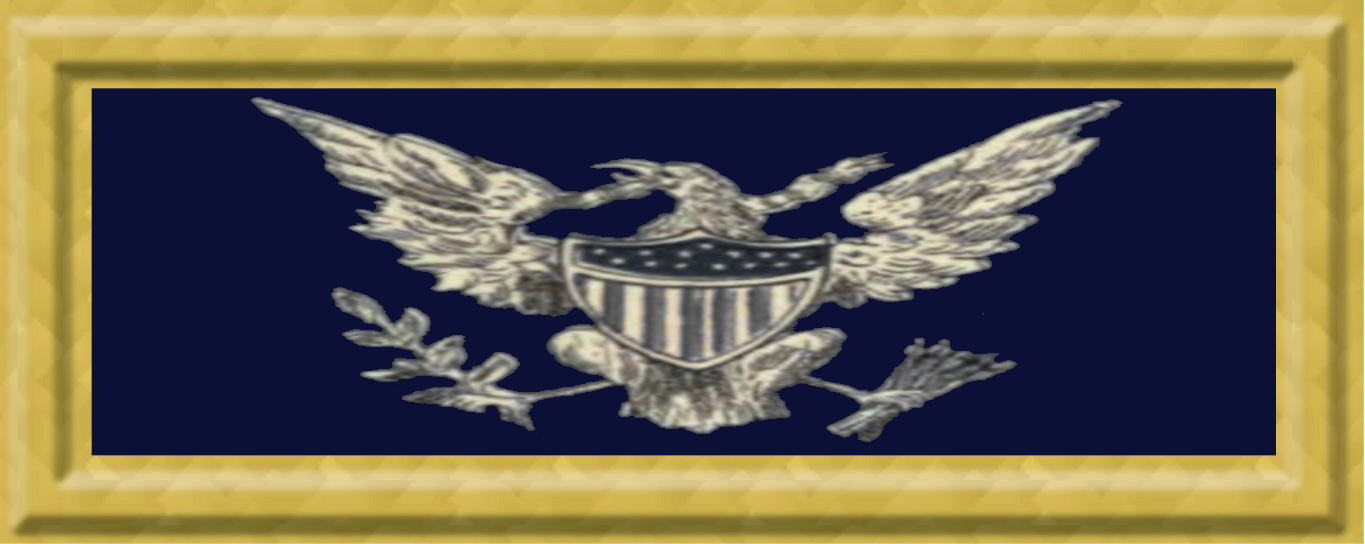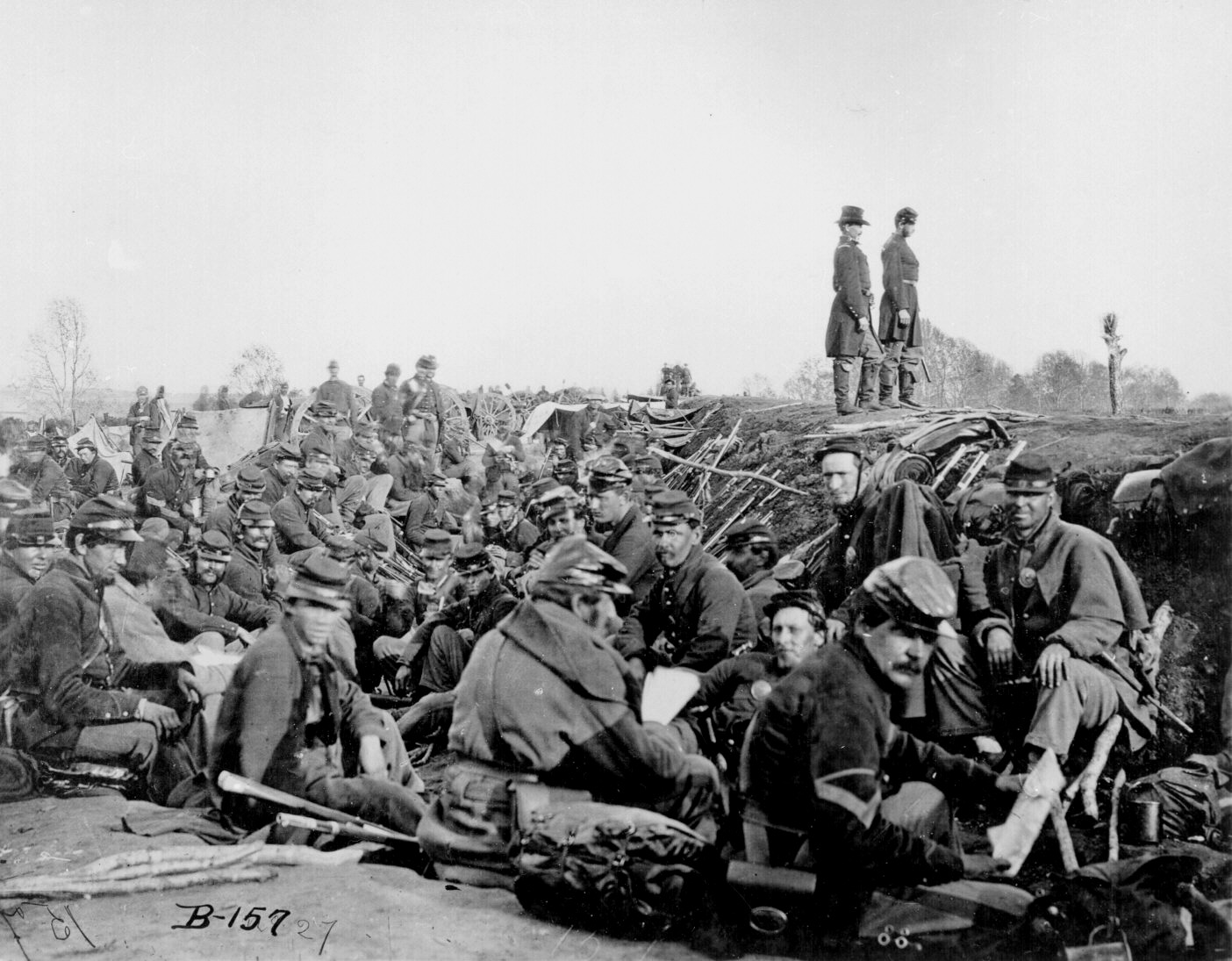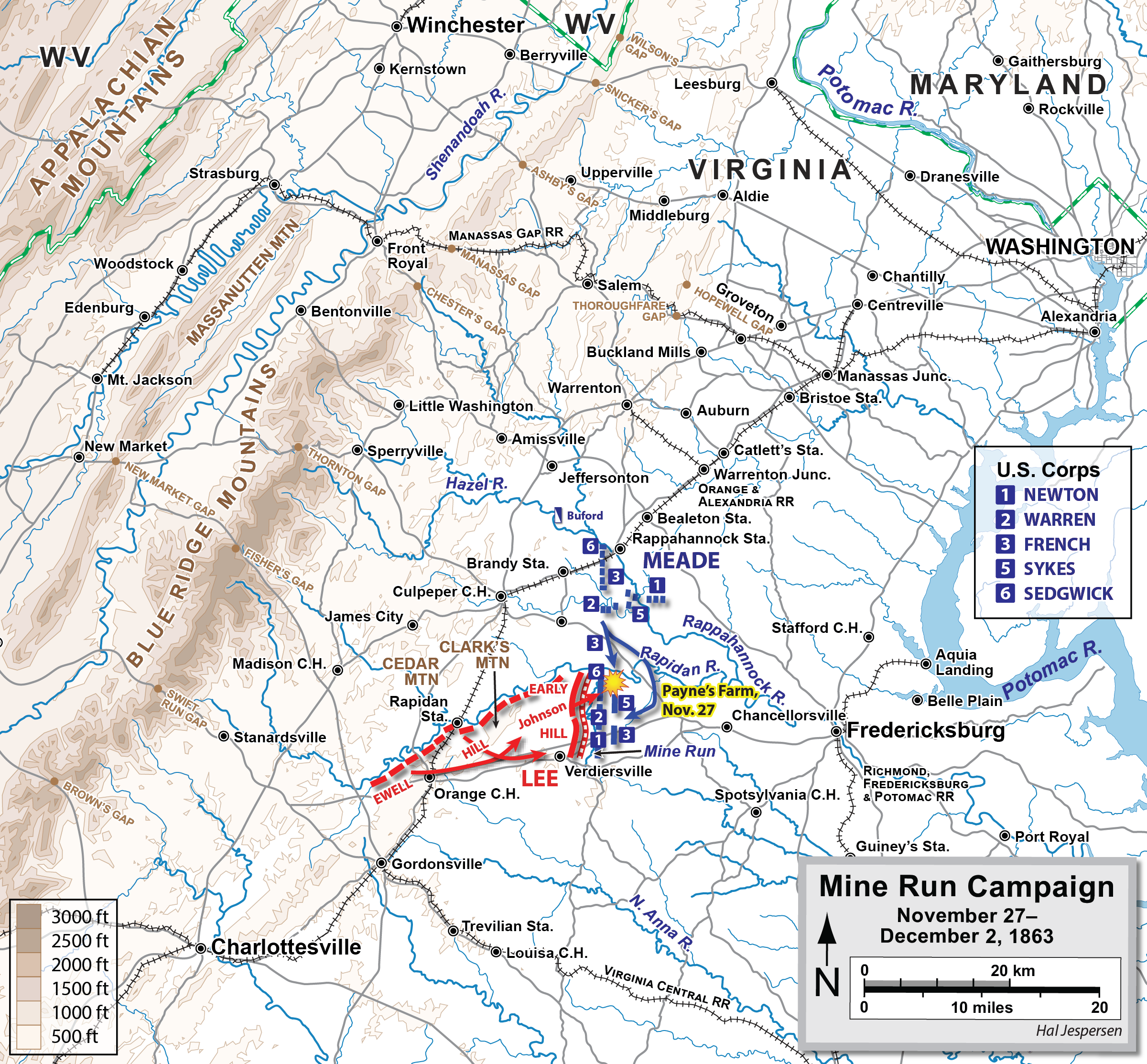|
1st United States Sharpshooters
The 1st United States Sharpshooters were an infantry regiment that served in the Union Army during the American Civil War. During battle, the mission of the sharpshooter was to kill enemy targets of importance (''i.e''., officers, NCOs, and artillery crews) from long range. The first regiment of volunteers began service in late November 1860. During their service, they fought in every Eastern battle up until autumn of 1864. During their tour, the Sharpshooters were noted for efficient service in the battles of Yorktown, Gettysburg, Spotsylvania and Petersburg. The 1st and 2nd U.S. Sharpshooters were consolidated on December 31, 1864. Founder Hiram C. Berdan was the founder of the Sharpshooters. Berdan was born in the town of Phelps, New York, on September 6, 1824. Not only was Berdan a military officer in the Civil War and creator of the Sharpshooters regiment, he was also an American mechanical engineer and creative inventor. Some of Berdan's inventions included the Be ... [...More Info...] [...Related Items...] OR: [Wikipedia] [Google] [Baidu] |
Union (American Civil War)
The Union was the central government of the United States during the American Civil War. Its civilian and military forces resisted the Confederate State of America, Confederacy's attempt to Secession in the United States, secede following the 1860 United States presidential election, election of Abraham Lincoln as president of the United States. Presidency of Abraham Lincoln, Lincoln's administration asserted the permanency of the federal government of the United States, federal government and the continuity of the Constitution of the United States, United States Constitution. Nineteenth-century Americans commonly used the term Union to mean either the federal government of the United States or the unity of the states within the Federalism in the United States, federal constitutional framework. The Union can also refer to the people or territory of the states that remained loyal to the national government during the war. The loyal states are also known as the North, although fou ... [...More Info...] [...Related Items...] OR: [Wikipedia] [Google] [Baidu] |
Battle Of Chancellorsville
The Battle of Chancellorsville, April 30 – May 6, 1863, was a major battle of the American Civil War (1861–1865), and the principal engagement of the Chancellorsville campaign. Confederate General Robert E. Lee's risky decision to divide his army in the presence of a much larger enemy force resulted in a significant Confederate victory, described by some historians as Lee's "perfect battle". The victory, a product of Lee's audacity and Union general Joseph Hooker's timid decision-making, was tempered by heavy casualties, including Lieutenant General (CSA), Lt. Gen. Thomas J. "Stonewall" Jackson. Jackson was hit by friendly fire, requiring his left arm to be amputated. He died of pneumonia eight days later, a loss that Lee likened to losing his right arm. The two armies had faced off against each other Battle of Fredericksburg, at Fredericksburg during the winter of 1862–1863. The Chancellorsville campaign began when Hooker secretly moved the bulk of his army up the left ... [...More Info...] [...Related Items...] OR: [Wikipedia] [Google] [Baidu] |
Infantry
Infantry, or infantryman are a type of soldier who specialize in ground combat, typically fighting dismounted. Historically the term was used to describe foot soldiers, i.e. those who march and fight on foot. In modern usage, the term broadly encompasses a wide variety of subspecialties, including light infantry, irregular infantry, heavy infantry, mountain infantry, motorized infantry, mechanized infantry, Airborne forces, airborne infantry, Air assault, air assault infantry, and Marines, naval infantry. Other subtypes of infantry, such as line infantry and mounted infantry, were once commonplace but fell out of favor in the 1800s with the invention of more accurate and powerful weapons. Etymology and terminology In English, use of the term ''infantry'' began about the 1570s, describing soldiers who march and fight on foot. The word derives from Middle French , from older Italian (also Spanish) ''infanteria'' (foot soldiers too inexperienced for cavalry), from Latin '' ... [...More Info...] [...Related Items...] OR: [Wikipedia] [Google] [Baidu] |
Hiram Berdan
Hiram Berdan (September 6, 1824 – March 31, 1893) was an American engineer, inventor, military officer, marksman, and guiding force behind and commanding colonel of the United States Volunteer Sharpshooter Regiments during the American Civil War. He was the inventor of the Berdan rifle, the Berdan centerfire primer and other weapons and accessories. Early life Berdan was born in Phelps, a small town in Ontario County, New York. A mechanical engineer in New York City New York, often called New York City (NYC), is the most populous city in the United States, located at the southern tip of New York State on one of the world's largest natural harbors. The city comprises five boroughs, each coextensive w ..., he had been the top rifle shot in the country for fifteen years prior to the Civil War. He invented a repeating rifle and a patented Musket#Ammunition, musket ball before the war. He had also developed the first commercial gold amalgamation machine to separate go ... [...More Info...] [...Related Items...] OR: [Wikipedia] [Google] [Baidu] |
Colonel
Colonel ( ; abbreviated as Col., Col, or COL) is a senior military Officer (armed forces), officer rank used in many countries. It is also used in some police forces and paramilitary organizations. In the 17th, 18th, and 19th centuries, a colonel was typically in charge of a regiment in an army. Modern usage varies greatly, and in some cases, the term is used as an Colonel (title), honorific title that may have no direct relationship to military. In some smaller military forces, such as those of Monaco or the Holy See, Vatican, colonel is the highest Military rank, rank. Equivalent naval ranks may be called Captain (naval), captain or ship-of-the-line captain. In the Commonwealth of Nations, Commonwealth's air force ranking system, the equivalent rank is group captain. History and origins By the end of the late medieval period, a group of "companies" was referred to as a "column" of an army. According to Raymond Oliver, , the Spanish began explicitly reorganizing part of thei ... [...More Info...] [...Related Items...] OR: [Wikipedia] [Google] [Baidu] |
Siege Of Petersburg
The Richmond–Petersburg campaign was a series of battles around Petersburg, Virginia, fought from June 9, 1864, to March 25, 1865, during the American Civil War. Although it is more popularly known as the siege of Petersburg, it was not a classic military siege, in which a city is Encirclement, encircled with fortifications blocking all routes of ingress and egress, nor was it strictly limited to actions against Petersburg. The campaign consisted of nine months of trench warfare in which Union Army, Union forces commanded by Lieutenant general (United States), Lieutenant General Ulysses S. Grant assaulted Petersburg unsuccessfully and then constructed trench lines that eventually extended over from the eastern outskirts of Richmond, Virginia, to around the eastern and southern outskirts of Petersburg. Petersburg was crucial to the supply of Confederate States Army, Confederate General (CSA), General Robert E. Lee's army and the Confederate States of America, Confederate capi ... [...More Info...] [...Related Items...] OR: [Wikipedia] [Google] [Baidu] |
Battle Of Cold Harbor
The Battle of Cold Harbor was fought during the American Civil War near Mechanicsville, Virginia, from May 31 to June 12, 1864, with the most significant fighting occurring on June 3. It was one of the final battles of Union Lt. Gen. Ulysses S. Grant's Overland Campaign, and is remembered as one of American history's most lopsided battles. Thousands of Union soldiers were killed or wounded in the frontal assault of June 3 against the fortified positions of Confederate Gen. Robert E. Lee's army—an action that intensified criticism of Grant's perceived indifference to heavy casualties. On May 31, as Grant's army once again swung around the right flank of Lee's army, Union cavalry seized the crossroads of Old Cold Harbor, about 10 miles northeast of the Confederate capital of Richmond, Virginia, holding it against Confederate attacks until the Union infantry arrived. Both Grant and Lee, whose armies had suffered enormous casualties in the Overland Campaign, received reinforc ... [...More Info...] [...Related Items...] OR: [Wikipedia] [Google] [Baidu] |
Battle Of Spotsylvania Court House
The Battle of Spotsylvania Court House, sometimes more simply referred to as the Battle of Spotsylvania (or the 19th-century spelling Spottsylvania), was the second major battle in Lt. Gen. Ulysses S. Grant and Maj. Gen. George G. Meade's 1864 Overland Campaign of the American Civil War. Following the bloody but inconclusive Battle of the Wilderness, Grant's army disengaged from Confederate General Robert E. Lee's army and moved to the southeast, attempting to lure Lee into battle under more favorable conditions. Elements of Lee's army beat the Union army to the critical crossroads of the Spotsylvania Court House in Spotsylvania County, Virginia, and began entrenching. Fighting occurred on and off from May 8 through May 21, 1864, as Grant tried various schemes to break the Confederate line. In the end, the battle was tactically inconclusive, but both sides declared victory. The Confederacy declared victory because they were able to hold their defenses. The United States decl ... [...More Info...] [...Related Items...] OR: [Wikipedia] [Google] [Baidu] |
Battle Of The Wilderness
The Battle of the Wilderness was fought on May 5–7, 1864, during the American Civil War. It was the first battle of Lieutenant general (United States), Lieutenant General Ulysses S. Grant's 1864 Virginia Overland Campaign against General (CSA), General Robert E. Lee and the Confederate States Army, Confederate Army of Northern Virginia. The fighting occurred in a wooded area near Locust Grove, Orange County, Virginia, Locust Grove, Virginia, about west of Fredericksburg, Virginia, Fredericksburg. Both armies suffered heavy casualties, nearly 29,000 in total, a harbinger of a Attrition warfare, war of attrition by Grant against Lee's army and, eventually, against the Confederate capital, Richmond in the American Civil War, Richmond, Virginia. The battle was Military tactics, tactically inconclusive, as Grant disengaged and then continued his offensive. Grant attempted to move quickly through the dense underbrush of the The Wilderness Forest, Wilderness of Spotsylvania, but L ... [...More Info...] [...Related Items...] OR: [Wikipedia] [Google] [Baidu] |
Battle Of Mine Run
The Battle of Mine Run, also known as Payne's Farm, or New Hope Church, or the Mine Run campaign (November 27 – December 2, 1863), was conducted in Orange County, Virginia, in the American Civil War. An unsuccessful attempt of the Union Army of the Potomac to defeat the Confederate Army of Northern Virginia, it was marked by false starts and low casualties and ended hostilities in the Eastern Theater for the year. Background After the Battle of Gettysburg in July, Confederate Gen. Robert E. Lee and his command retreated back across the Potomac River into Virginia. Union commander Maj. Gen. George G. Meade was widely criticized for failing to pursue aggressively and defeat Lee's army. Meade planned new offensives in Virginia for the fall. His first attempt was a series of inconclusive duels and maneuvers in October and November known as the Bristoe campaign. In late November, Meade attempted to steal a march through the Wilderness of Spotsylvania and strike th ... [...More Info...] [...Related Items...] OR: [Wikipedia] [Google] [Baidu] |
Second Battle Of Rappahannock Station
The Second Battle of Rappahannock Station took place on November 7, 1863, near the village of Rappahannock Station (now Remington, Virginia), on the Orange and Alexandria Railroad. It was between Confederate forces under Maj. Gen. Jubal Early and Union forces under Maj. Gen. John Sedgwick as part of the Bristoe Campaign of the American Civil War. The battle resulted in a victory for the Union. Background After the Battle of Gettysburg in July 1863, the Union and Confederate armies drifted south and for three months sparred with one another on the rolling plains of northern Virginia. Little was accomplished, however, and in late October General Robert E. Lee withdrew his Confederate army behind the Rappahannock River, a line he hoped to maintain throughout the winter. A single pontoon bridge at the town of Rappahannock Station was the only connection Lee retained with the northern bank of the river. The bridge was protected by a bridgehead on the north bank consisting o ... [...More Info...] [...Related Items...] OR: [Wikipedia] [Google] [Baidu] |
Battle Of Bristoe Station
The Battle of Bristoe Station was fought on October 14, 1863, at Bristow, Virginia, Bristoe Station, Virginia, between Union Army, Union forces under Major general (United States), Maj. Gen. Gouverneur K. Warren and Confederate States Army, Confederate forces under Lieutenant General (CSA), Lt. Gen. A. P. Hill during the Bristoe Campaign of the American Civil War. The Union II Corps (Union Army), II Corps under Warren was able to surprise and repel the Confederate attack by Hill on the Union rearguard, resulting in a Union victory. Background The Union army was led by Maj. Gen. George G. Meade, the Confederates by General Robert E. Lee. Lee had stolen a march, passing around Cedar Mountain, the site of a Battle of Cedar Mountain, battle in 1862. This forced Meade to retreat toward Centreville, Virginia, Centreville. By withdrawing, Meade prevented Lee from falling on an exposed flank of the Army of the Potomac. Maj. Gen. Gouverneur K. Warren, commanding II Corps (Union Army), II ... [...More Info...] [...Related Items...] OR: [Wikipedia] [Google] [Baidu] |








